
Gittenbergeria turriplana of air-breathing land snail, terrestrial pulmonate gastropod mollusks in the family Trissexodontidae.

Neoplanorbis tantillus is a species of very small air-breathing freshwater snail, an aquatic gastropod mollusk in the family Planorbidae, the ram's horn snails. This species is endemic to the United States. In 2012, it has been declared extinct by the IUCN Red List of Threatened Species.
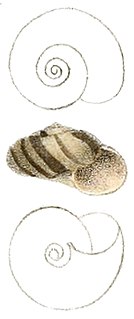
Sinployea decorticata a species of small air-breathing land snail, a terrestrial pulmonate gastropod mollusk in the family Charopidae. This species was endemic to the Cook Islands; it is now extinct.

Trissexodon constrictus is a species of air-breathing land snail, a terrestrial pulmonate gastropod mollusk in the family Trissexodontidae.
Zonitoides jaccetanicus is a species of small, air-breathing land snail, a terrestrial pulmonate gastropod mollusk in the family Gastrodontidae.

Vertigo substriata is a species of minute air-breathing land snail, a terrestrial pulmonate gastropod mollusk or micromollusk in the family Vertiginidae, the whorl snails.

Vertigo alpestris is a species of minute, air-breathing land snail, terrestrial pulmonate gastropod molluscs or micromollusks in the family Vertiginidae, the whorl snails.
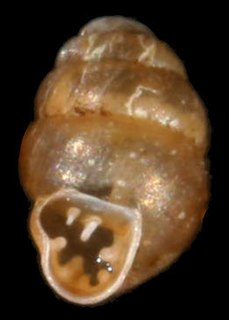
Vertigo pusilla is a species of minute air-breathing land snail, a terrestrial pulmonate gastropod mollusk or micromollusk in the family Vertiginidae, the whorl snails.
Microphysula cookei, common name the Vancouver snail, is a species of air-breathing land snail, a terrestrial pulmonate gastropod mollusk in the family Thysanophoridae.

Canariella hispidula is a species of small, air-breathing land snails, terrestrial pulmonate gastropod mollusks in the family Canariellidae, the hairy snails and their allies.

Calliotropis pagodiformis is a species of sea snail, a marine gastropod mollusk in the family Eucyclidae.

Crossea biconica is a species of small sea snail or micromollusc, a marine gastropod mollusc in the family Conradiidae.

Hadroconus sibogae is a species of extremely small deep water sea snail, a marine gastropod mollusk in the family Seguenziidae.
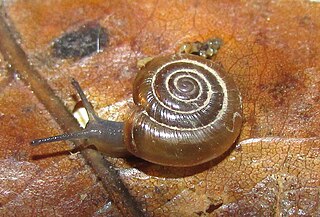
Oxychilus camelinus is a species of small air-breathing land snail, a terrestrial pulmonate gastropod mollusk in the family Oxychilidae, the glass snails.
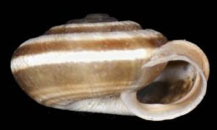
Zarateana arganica is a species of air-breathing land snail, a terrestrial pulmonate gastropod mollusk in the family Geomitridae.
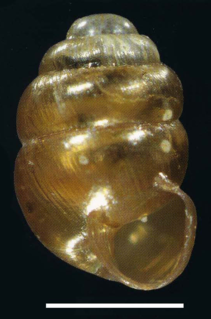
Vertigo ultimathule is a species of minute, air-breathing land snail, terrestrial pulmonate gastropod molluscs or micromollusks in the family Vertiginidae, the whorl snails.
Plectostoma sciaphilum was a species of land snail in the family Diplommatinidae. This species was originally found on a single limestone karst at Bukit Panching, in Peninsular Malaysia. In 2007, this karst was quarried, thus destroying the only known site of occurrence for this species. Plectostoma species are allopatric, being in found in dozens of isolated karst hills where few species occur, meaning that limited gene flow exists and only negligible hybridization occurs. Shell is distinctly convex, tuba shape similar to that of Plectostoma senex and P. turriforme, but this species lacks basal constriction teeth. Shell height: 2.6–2.9 mm, width: 1.5–1.6 mm.

Papuina trochiformis is a species of air-breathing land snail, a terrestrial pulmonate gastropod mollusk in the family Camaenidae.

Xerogyra spadae is a species of air-breathing land snail, a terrestrial pulmonate gastropod mollusk in the family Geomitridae.
Zospeum zaldivarae is a cave-dwelling species of air-breathing land snail.















